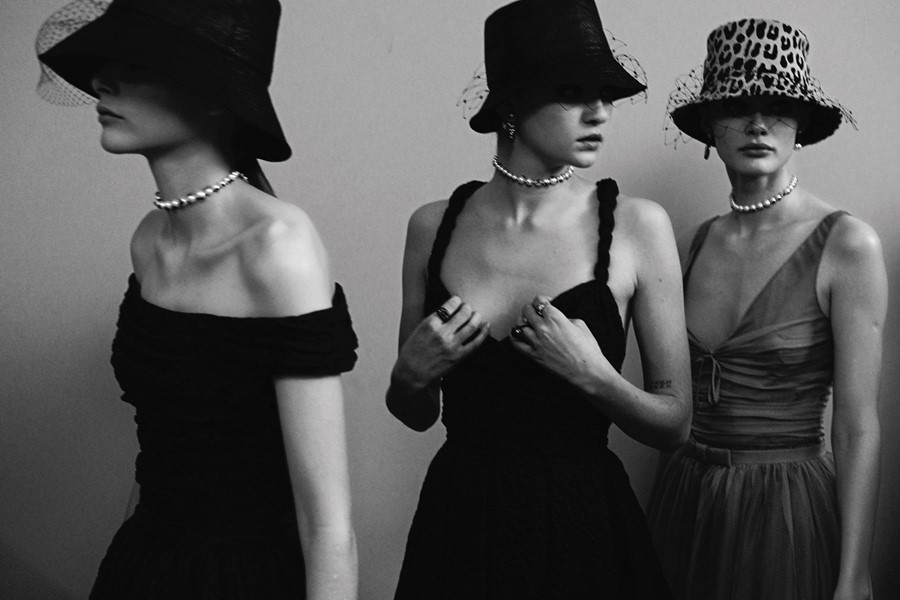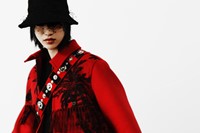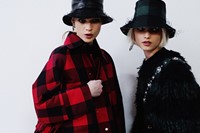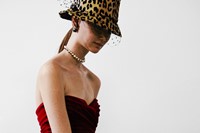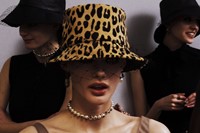Maria Grazia Chiuri looked to the elegance and rebellion of post-war Britain for her Autumn/Winter 2019 collection
The centrepiece of Christian Dior: Designer of Dreams – a blockbuster exhibition of the French couturier’s work currently on show at the V&A – is a gown Dior created for Princess Margaret’s 21st birthday, immortalised in a 1951 portrait by Cecil Beaton. It is a dress that encompasses both elegance and rebellion: opting for a French designer was a departure from tradition, the vast layered skirt a rebuke to post-war austerity. (Marks of rebellion are etched on the gown too – it is stained with wine and cigarettes, vices of the party-loving princess.)
Elegance and rebellion were also the words chosen by Maria Grazia Chiuri to describe her Autumn/Winter 2019 collection for Dior, shown in Paris yesterday. She too had viewed the gown – prior to the exhibition’s opening – prompting her to further investigate Britain, and the various influences it had on Monsieur Dior’s work. “There is no other country in the world, besides my own, whose way of life I like so much. I love English traditions, English politeness, English architecture. I even love English cooking,” he famously noted in his memoir. A regular visitor, he long purchased his suits on Savile Row; later in his career, he hosted salon presentations in the Savoy Hotel and Blenheim Palace. Alongside Princess Margaret, with whom he maintained a friendship throughout his life, Dior also dressed the women at the very peak of Britain’s social strata, from novelist Nancy Mitford to ballerina Margot Fonteyn.
Chiuri’s research, though, took her far from Dior’s upper-class clients and towards images of post-war rebellion among the country’s working classes. Encountering the photographs of Ken Russell, which capture Britain’s teddy boys and girls (known as Judies) – an early-1950s subculture, whose distinct uniform combined decorative Edwardian jackets with denim jeans and velvet, pompadour hair, and for the girls, Kohl-lined eyes – was akin to the discovery of a distant tribe. She could hardly believe that this was happening at the same time a young Princess Margaret was inhabiting the circles of high society.
But there was a link between the two, if Chiuri looked closer: those Edwardian jackets, cinched at the waist as they were, had an uncanny likeness to Dior’s Bar Jacket. And, like Dior’s New Look, they too proffered decadence – for them, the frills of Edwardian aristocrats – as a rebuke to austerity. Back in the Dior archives in Paris, she found the leather jacket which Yves Saint Laurent created for the house later in the 1950s, inspired by the blousons noirs, a similar movement in Paris itself sparked by the leather-jacketed Marlon Brando and James Dean. This energy – the meeting of two opposing worlds – set her collection in motion.
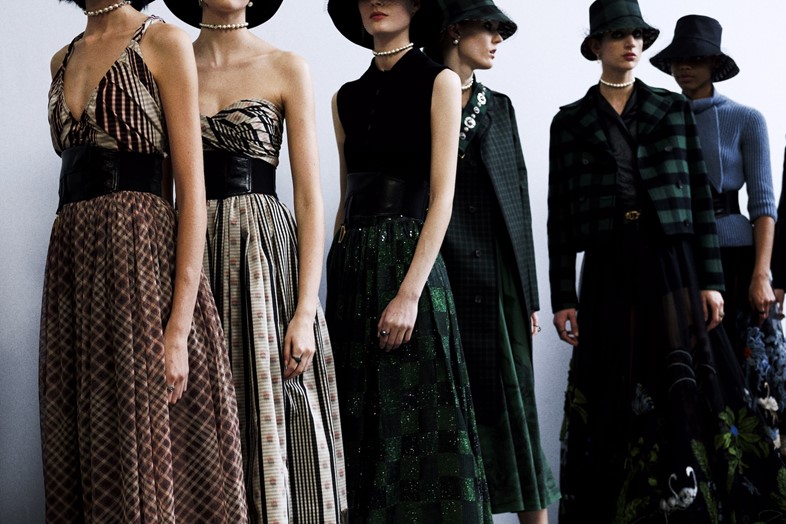
So for this latest collection, she went after lightness, and a Dior for the street: Chiuri finds the New Look beautiful but heavy, so she reformulated the slim-waisted silhouette in lightweight quilted fabric; while a sportier outlook was introduced in tulle skirts reformulated in technical mesh, veiled bucket hats, or sporty checkered pullover anoraks which bore the house’s name as a logo. Teddy girl style was referenced overtly at points: collars were buttoned-up, kitten heels worn with socks, and various plaid checks nodded to the movement as a precursor to punk. A series of more elegant gowns decorated with relief flowers and clear pailettes, meanwhile, referenced the “strength and grace” of Dior’s Miss Dior dress made in 1949. Rebellion, for Chiuri, could take many forms: “The simple act of choosing one’s clothing becomes a political semaphore,” the notes read.
Chiuri also imagined this literally: a series of slogan T-shirts, like those she has favoured in previous collections (most memorably Chimamanda Ngozi Adichie’s assertion ‘We Should All Be Feminists’, shown as part of her debut collection). This time, it was the words of American poet Robin Morgan. ‘Sisterhood is Global,’ one read; ‘Sisterhood is Powerful,’ another. As the first female creative director of the house, Chiuri is proposing a rebellion – and visual language – all her own.
